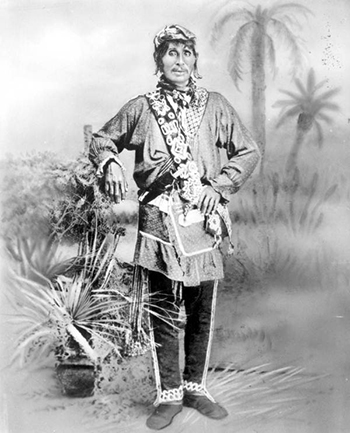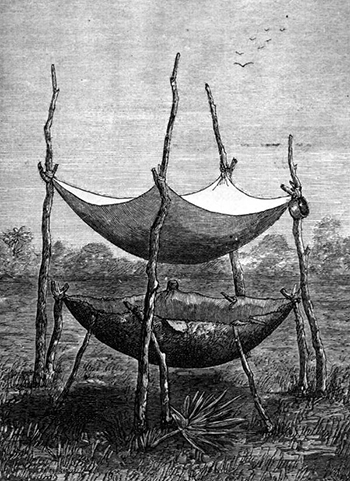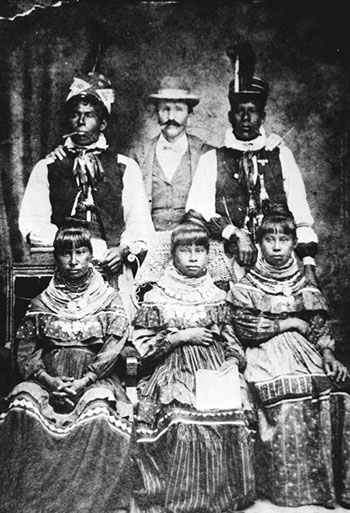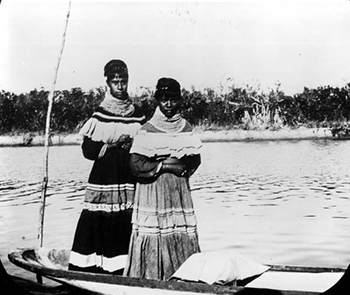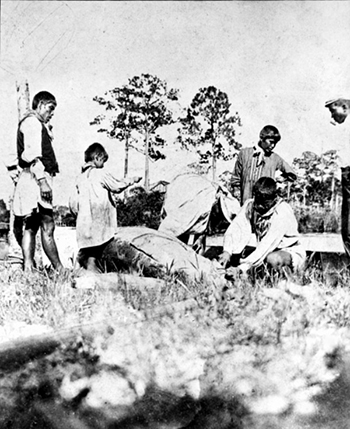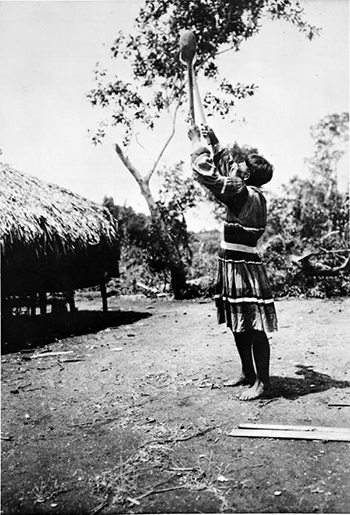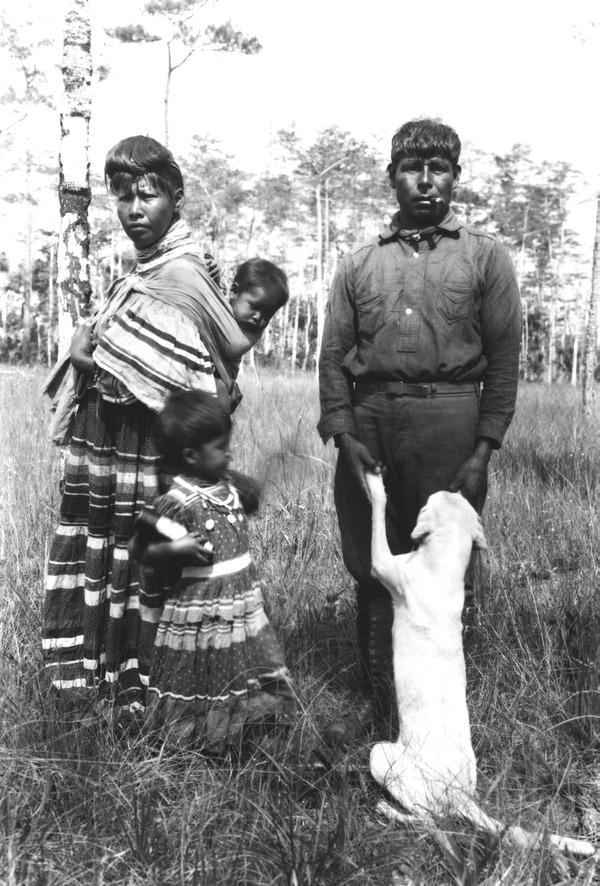The Florida Seminoles
Photos and History
Florida Frontier
At the end of the Seminole Wars in 1858, only about 200 Seminoles remained in Florida. The Seminoles rebuilt their communities and became part of the economic and cultural development of the Florida frontier.
Chief Tallahassee (1884)
Image number: RC06683
Tallahassee was a head-man of about 30 Seminole families who lived in Polk County from the 1850s until the 1890s.
Seminoles mixed Euro-American materials with traditional styles. In this photograph, Tallahassee wears intricate sashes, belts, and leggings. The leggings, made from buckskin, were better suited for a colder climate. They were only worn on rare occasions in South Florida.
Drawing of a Seminole coontie strainer (ca. 1880)
Image Number: PR04767
Seminoles made flour by grinding, soaking, and straining the root of the tropical coontie plant (also known as arrowroot). The dried residue could be made into bread and other foods.
Seminoles with Indian trader Will Stranahan: Fort Lauderdale (ca. 1900)
Image number: N032163
Frank Stranahan established a trading post on the New River in the 1890s. The store sold cloth, guns, ammunition, canned goods, and metal tools. Ivy Stranahan was a key member of a group called Friends of the Seminoles. They worked to provide educational opportunities for the Florida Seminoles.
Seminole women in a dugout canoe (early 1900s)
Image Number: RC04593
Seminoles built dugout canoes from cypress logs. Canoes served as the primary means of transportation during the wet season.
Seminole family butchering a manatee for food (early 1900s)
Image Number: N033364
Ingraham Charlie posing with wooden ball sticks at Jack Tigertail’s camp (1910)
Image number: N032007
The Seminole version of stickball is related to games played by other southeastern Indians since prehistoric times. These games often helped solve disputes without going to war. The Choctaw of Mississippi referred to the game as the “little brother of war.”
Seminole Josie Billie with family and dog (1921)
Image number: SM3065
Medicine man Josie Billie was a leader of the Mikasuki Seminoles. He moved to the Big Cypress Reservation in the late 1930s.

 Listen: The Folk Program
Listen: The Folk Program